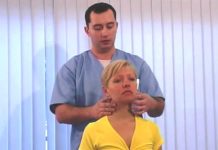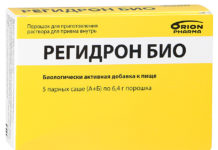Hemlock is a weed and poisonous plant. In our country, it is not considered pharmacopoeial, but in many European countries it is officially recognized as a medicinal product. Proponents of alternative methods of healing have long used plant poison in low concentrations as a lifesaver. But official medicine does not give a final conclusion, but it does not discount the healing properties and contraindications of the hemlock. The special status of the plant is evidenced by the fact that in a number of countries, scientists are still trying to get new antitumor drugs from grass juice.
Material Content:
Hemlock herb - healing properties
Hemlock has been known to mankind since antiquity. He was mentioned in his treatises by the founder of medicine - Hippocrates. In Greece, during the time of Socrates, the juice of a plant was used as an officially authorized poison for execution.
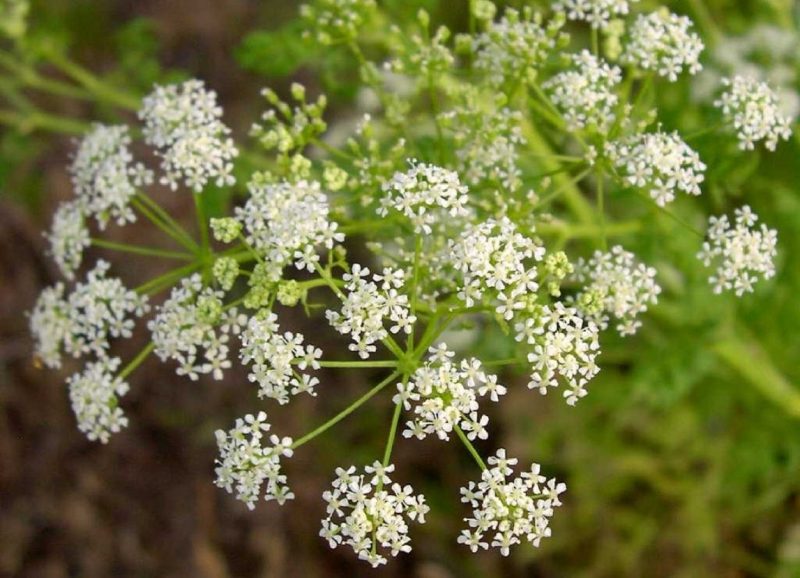
The whole aerial part of the hemlock (stems, leaves, inflorescences and fruits) is saturated with alkaloids. These substances cause severe poisoning in humans. However, in ultra-low doses, they have a completely different effect. Alkaloids are able to activate the body's defenses and tune it to recovery.
The main poison of the hemlock is Koniin. In strength, it is slightly weaker than curare (deadly poison, which the inhabitants of the South American continent smeared the arrowheads with). Another part of the active compounds is conhydrin, konicein, methylconiine.
Hemlock drugs are used in homeopathy (a value system where drugs are prepared by repeatedly diluting active substances that, in high doses, cause symptoms similar to the manifestations of the disease, and in small concentrations can reconfigure the body and encourage it to recover). The plant has an anti-inflammatory and soothing effect.
They treat them:
- diseases of joints and bones, including those associated with metabolic disorders (deforming arthritis, arthrosis, gout);
- vascular disease (thrombophlebitis, atherosclerosis);
- autoimmune diseases (lupus, rheumatism).
Traditional medicine attributes the hemlock to painkillers, antihypertensives, anticonvulsants, and immunostimulating properties. The plant helps with epilepsy, dizziness, spastic pains of the stomach and intestines, cerebrovascular spasms, anemia, inflammation of the lymph nodes, chronic infections.
Alternative medicine uses hemlock to treat benign tumors, polyps, adenomas, and skin tumors.
The grass stimulates the separation of urine, helps with painful periods, regulates the female cycle, stops attacks of excruciating cough.
What helps the plant?
Cancer use
One of the most important properties of a plant is its ability to infect cancer cells.
Hemlock venoms Koniin and Quercetin in small quantities stimulate the immune system, set it up to destroy abnormal, actively growing neoplasms.
Small doses of poisons are perceived by the body as foreign substances. He seeks to get rid of them, activating all his forces. Along the way, immunity pounces on any, different from normal, cells, including all kinds of pathogenic bacteria, acting from the outside and from the inside.
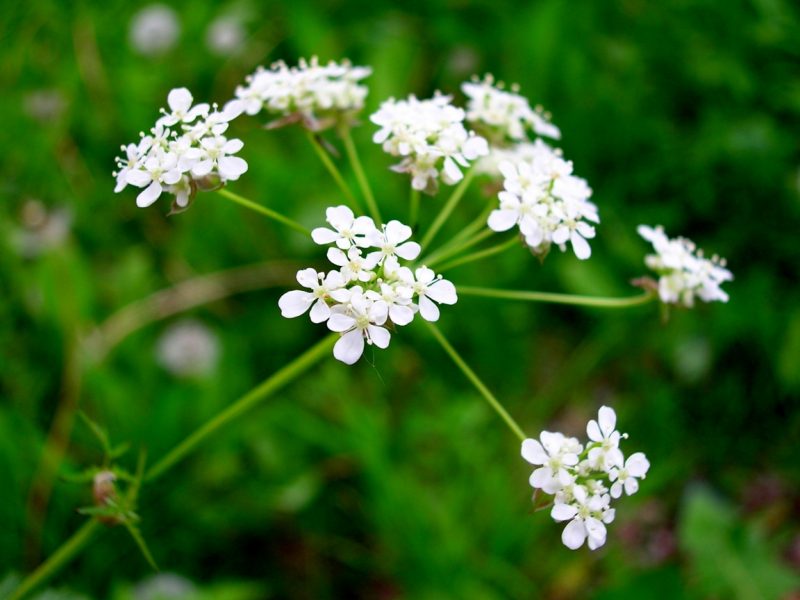
According to adherents of alternative medicine, hemlock inhibits tumor growth at any stage of the disease. It can slow the spread of metastases and even completely cure cancer.
Sensitivity to herbal preparations is different for everyone. Poisons only push the immune system to fight the disease. Hence the conclusion: the more strength a person has left, the higher the chances of recovery. Since the health of everyone is different, respectively, someone will help hemlocks, someone will not.
A lot of reviews can be found about the effectiveness of the plant, but the truth of these statements is difficult to confirm. Official medicine does not recommend abandoning traditional therapy in favor of herbal treatment.
The use of hemlock drugs in cancer does not always give a positive effect. Even according to herbalists themselves, approximately 30% of patients do not develop an immune response. This may be due to immunity to the drug or too weak health.
Proponents of alternative methods believe that natural remedies at least have the right to become part of complex therapy, i.e. with the approval of a doctor, they can be used in conjunction with conventional drugs. To increase the effectiveness of treatment in advanced cases, it is worth periodically changing poisons. After the hemlock, you can switch to aconite or celandine, thereby activating additional resources.
In gynecology
Hemlock drugs are used in folk medicine for the treatment of fibroids and cysts of the female genital organs of various localization. Conium maculatum (the Latin name of the plant) is prescribed for cervical erosion, endometrial polyps, benign neoplasms of the mammary glands, malfunctions in the menstrual cycle, meager or painful periods.
To treat the mucous membrane of the cervix, cystic formations of the ovaries, tampons are used, soaked in infusion of chamomile, sage, calendula with the addition of a few drops of a hemlock water extract.
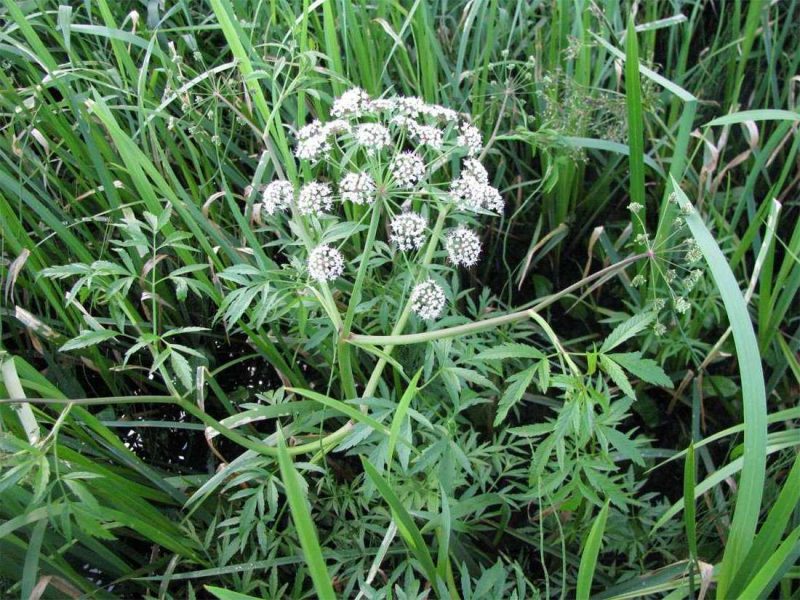
Natural raw materials serve as the basis for the drug Mastopol (against formations in the mammary glands). In 2004, scientists from the laboratory of FSBI NTsAGiP them. IN AND.Kulakova was a series of studies confirming the effectiveness of this drug.
In 70% of women who received Mastopol, by the end of the first month of treatment, there was a positive trend in the form of a decrease in the density and size of formations. After two months of the drug, 60% of patients completely got rid of fibrocystic seals. The remaining 40% showed marked improvements.
From the foregoing, it follows that hemlock, together with other homeopathic remedies, does have a positive effect on women's health.
How to take hemlock?
Tincture - how to cook and use
Alcohol most effectively draws alkaloids, so tincture is considered the most potent drug in the range of hemlock drugs. It is it that is used to treat serious diseases.
The secret to cooking is strict adherence to the rules for the procurement of raw materials, exact adherence to recommendations on proportions and holding time. The greatest number of alkaloids is concentrated in a mature plant. Hemlock need to be collected at the end of flowering, the beginning of fruiting.

Alcohol and parts of the plant are taken in a ratio of 1: 2. The collected hemlocks should not be stored for a long time. When shrinking, it loses its beneficial properties.
It is best to prepare the tincture directly at the place of collection. Prepare a liter jar in advance with 200 ml of alcohol poured into it. Collect two glasses of inflorescences and seeds. Grind them right on the spot with scissors and put them in a jar of alcohol. Close the lid tightly.
Upon returning the bank should be put in a cool place. The product should be infused at a temperature of 15-20 ° C. The optimum exposure time is 40 days. But if you need tincture of a hemlock earlier, you can reduce this period to 21 days.
The jar needs to be shaken without opening daily. At the end of the term, the medicine should be filtered. Drain into a clean glass dish. Tightly pack, be sure to sign (so that no one at home accidentally drank) and put in the refrigerator.
As a painkiller during menstruation, with intestinal cramps, and renal colic, tincture is taken up to 5 times a day, two drops per glass, 20-30 minutes before meals. With other types of pain, you can lubricate the skin over the problem area with a cotton pad dipped in tincture.
Treatment of chronic complex diseases, cancer, tuberculosis, benign neoplasms is carried out according to the scheme. On the first day in the morning, an hour before meals, take a drop of the drug dissolved in half a glass of water. On the second day they drink two drops and so on until 13.
Starting from the fourteenth day, the drops are dissolved in a larger volume (2/3 cup) of water. Daily increase the dose to 24 drops.
From the 25th day, the product is diluted in a whole glass of water. Bring the dose to 40 drops. After that, in the reverse order, reduce the volume of the drug to 1 drop.
Alternate several courses at once without a break for 8 months. Sometimes at some stage the patient may feel signs of a worsening of well-being: nausea, dizziness. This does not mean that you should refuse treatment. Just from this day you need to start reducing the dose, not bringing it to the maximum.
The best option for the treatment of chronic diseases may be to smoothly bring up to 15 drops according to the announced dose schedule. And then taking this amount for 4 months. The mild way helps to avoid side effects.
Radical treatment consists in taking 5 drops of hemlock three times a day at six-hour intervals. The next day, the dose is increased by one drop. Thus, bring to 30 drops. Reduce to 5 in reverse order. Hemlock is dissolved in a small amount of water. Take before meals (for 20-30 minutes).
Hemlock oil
Oil is obtained from freshly picked inflorescences. You need to cut off the juicy, fleshy parts of the plant. They are crushed with scissors. Immediately fill them with a third of the glass jar. Pour vegetable oil to the very neck.Put the container in a cool place for three weeks. Shake daily without opening the lid.
Oil is filtered through gauze. Store in a cool dark place.
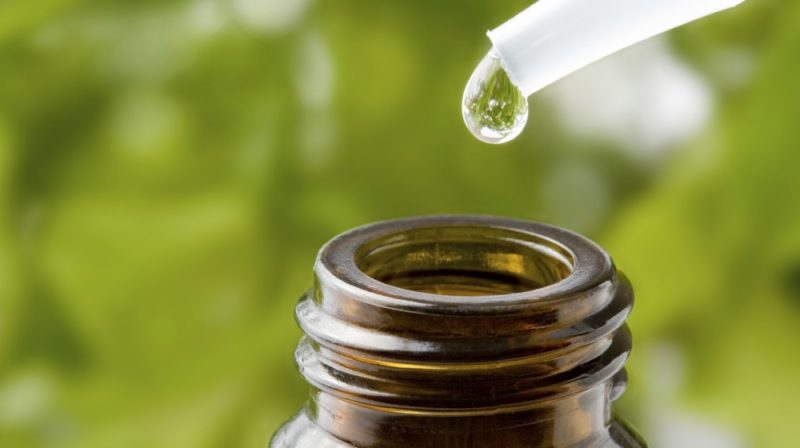
It is used externally:
- in the presence of cysts and fibroids in the chest;
- with pain in the joints;
- to relieve discomfort during thrombophlebitis;
- during the treatment of hemorrhoids.
Before applying to the skin, the product is again diluted with vegetable oil in a ratio of 1: 2.
Side effects of the plant
In the right doses, hemlock drugs practically do not cause side effects. Grass slightly increases pressure and strengthens heart contractions.
With an excess of the drug, signs of poisoning are observed: nausea, salivation, dizziness, convulsions, loss of skin sensitivity. Starting from the lower extremities, paralysis develops. Asphyxiation can lead to complete respiratory arrest.
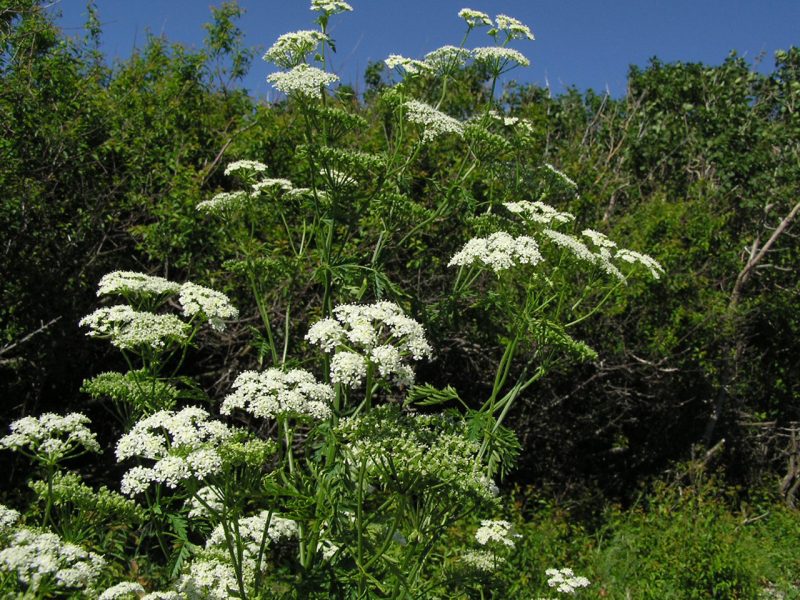
In the presence of the first signs, emergency measures should be taken. Rinse the stomach and drink an antidote - milk slightly tinted with potassium permanganate.
Poisoning can occur in case of accidental contact with any part of the plant, so you need to collect it only with gloves.
Contraindications
Means from hemlock rarely cause an allergic reaction. But if the patient is particularly susceptible, he should not be treated with herbal preparations.
It is forbidden to give hemlock to children under 18 years of age, nursing and pregnant women. Tincture is contraindicated for overly weakened patients connected to an artificial respiration apparatus, and for patients who have recently undergone surgery.

The hemlock alkaloids are utilized by the liver, therefore, with serious violations in the functioning of this body, such a medicine can be harmful.
Treatment with poisons becomes effective when all conditions are met, therefore, it is better to contact competent specialists who will select the right dose and form a dosage regimen for help.






